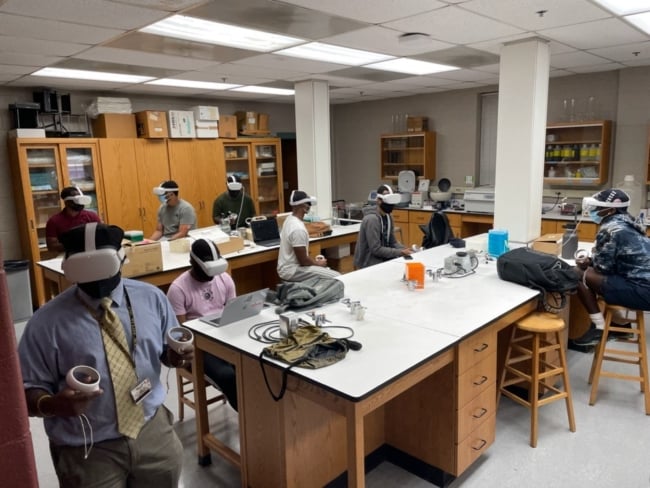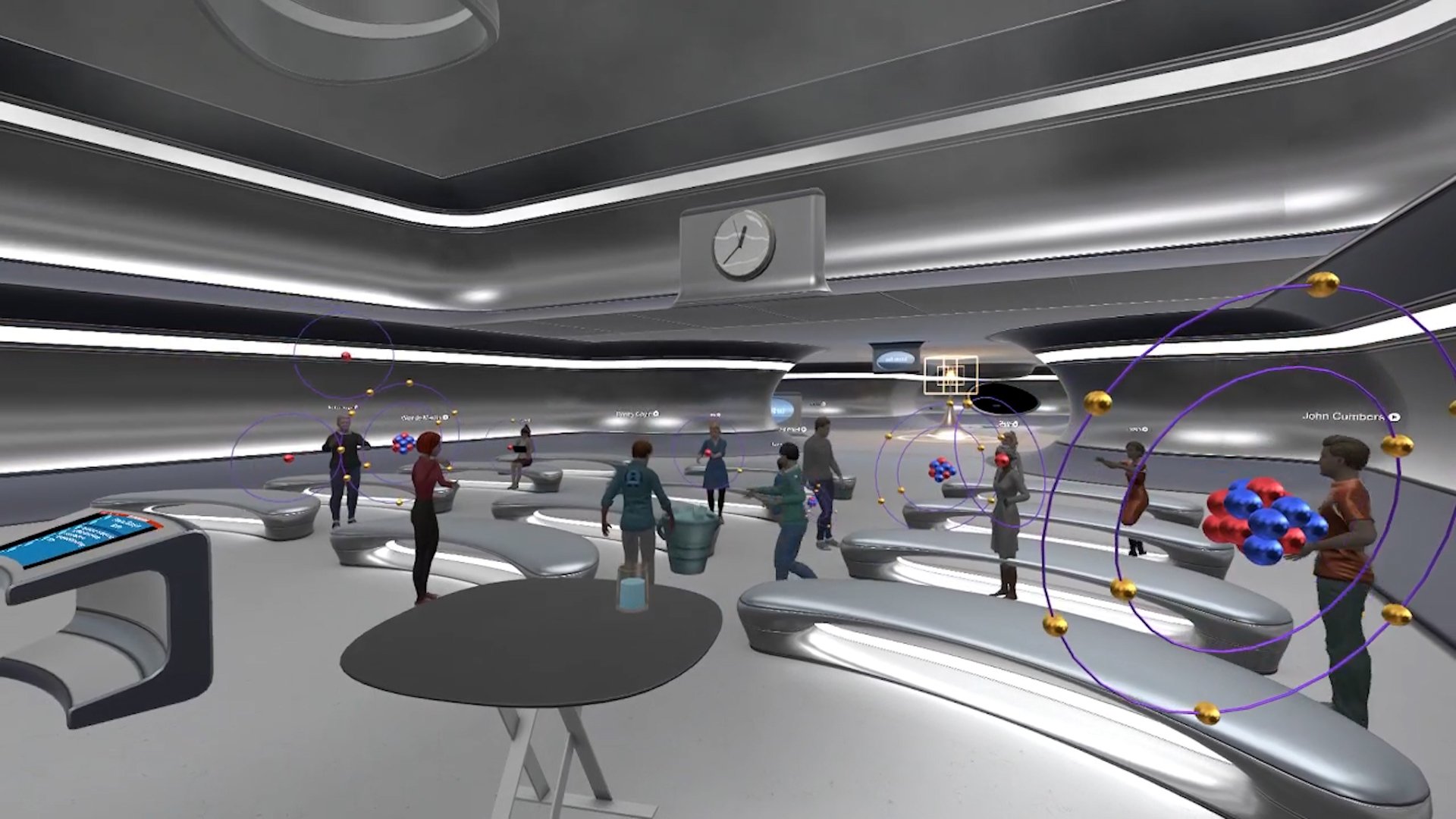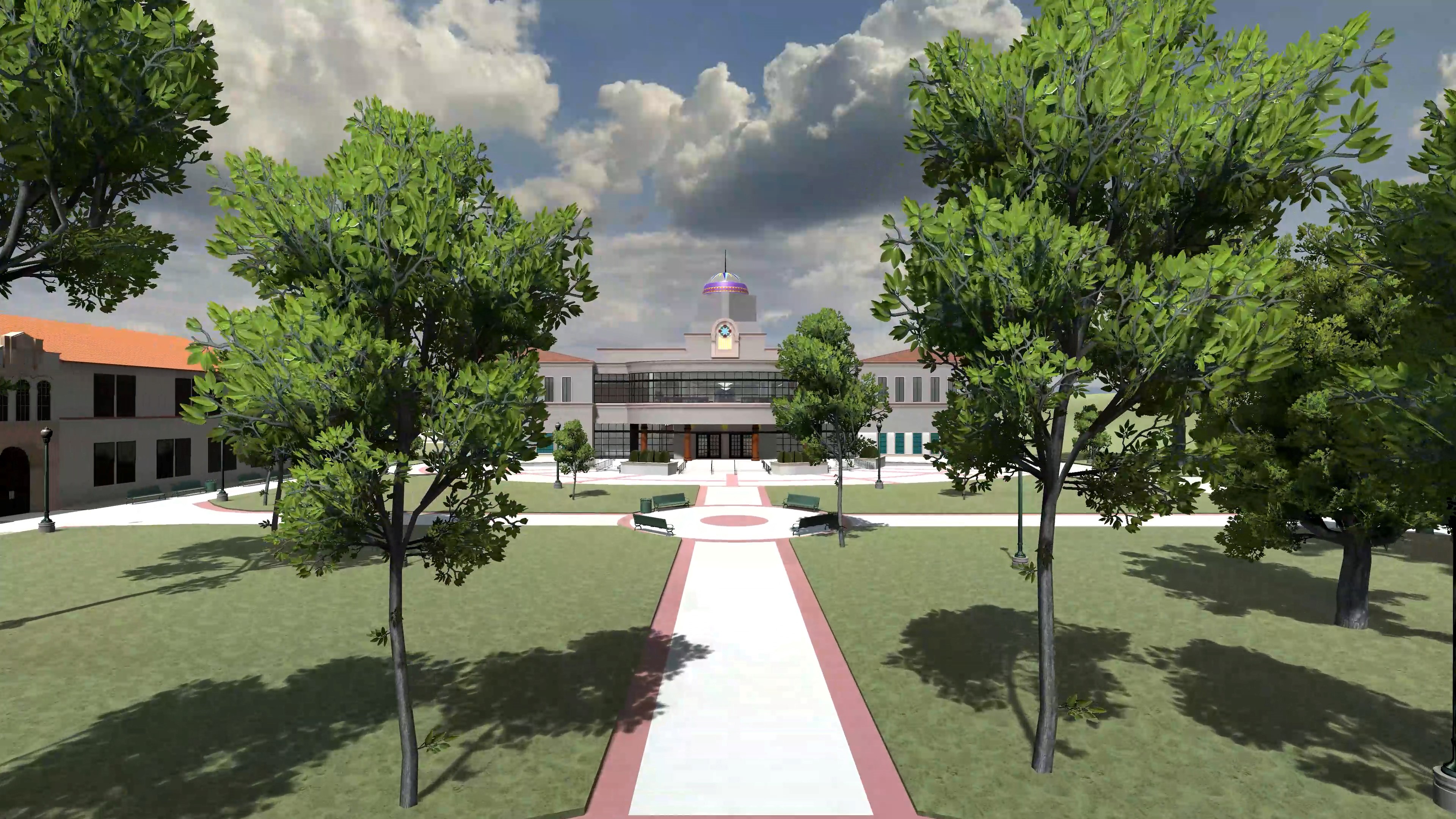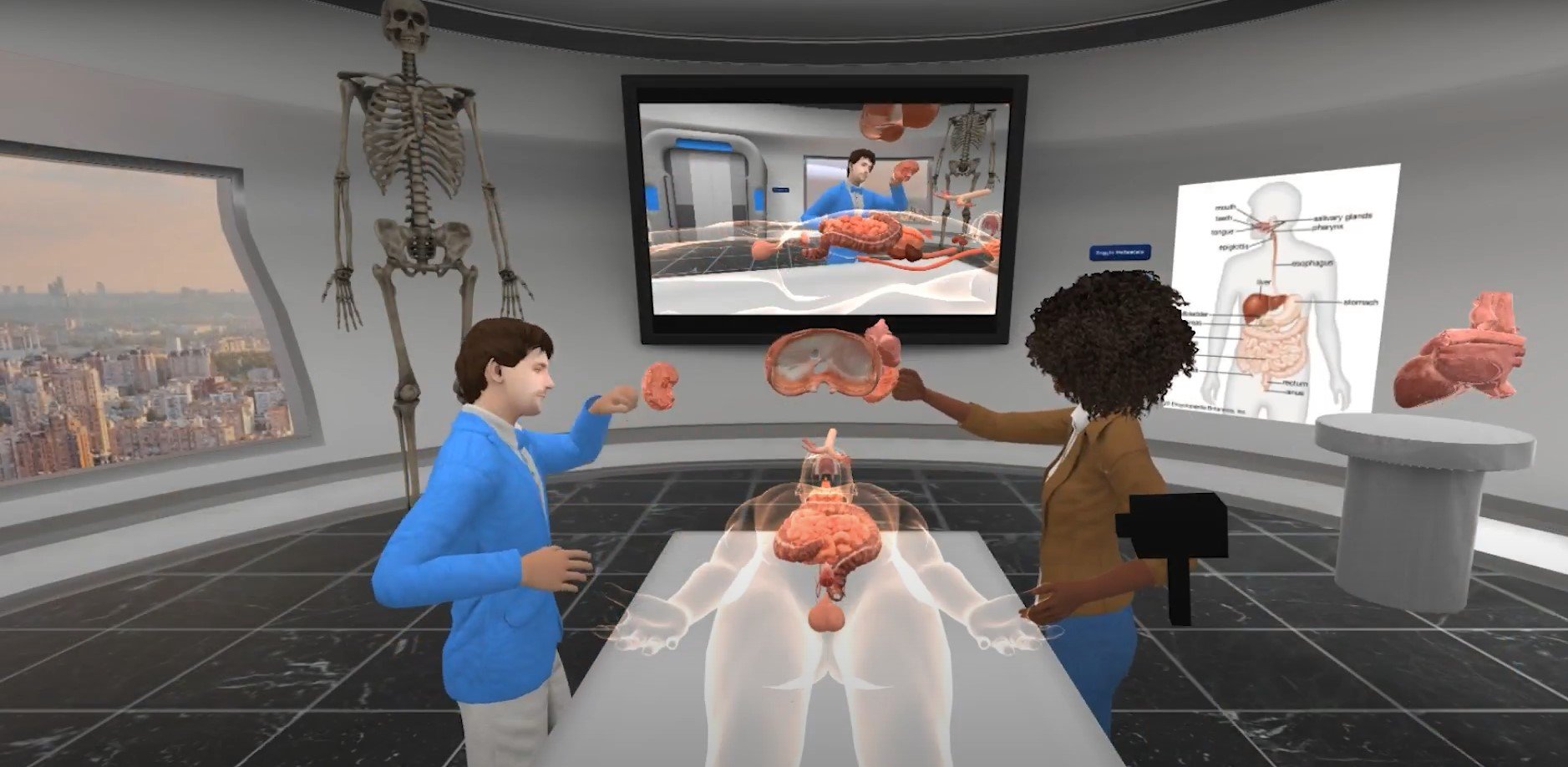You have /5 articles left.
Sign up for a free account or log in.

Morehouse College students use Meta’s virtual reality headsets to enhance their learning in a microbiology class.
Morehouse College
It’s not as pricey as it sounds: visiting Egypt, blasting off for Mars, traveling in time, rebuilding an entire college campus. When it all happens in the virtual realms of the metaverse, almost anything is possible to support new and innovative learning experiences.
But for the vanguard of colleges experimenting with the concept of “metaversities” and classes held in virtual reality, a financial reality is becoming clear: bringing the metaverse to large numbers of faculty and students is costly and hard to pull off.
“The dilemma we have is the demand and interest is much higher than we can accommodate,” said Daniel Mintz, department chair for information technology at the University of Maryland Global Campus.
UMGC was one of 10 institutions chosen by Facebook’s parent company, Meta, for a metaversity pilot program in the fall of 2022. The initiative is part of Meta’s $150 million investment in immersive learning.
A metaversity, a mashup of “metaverse” and “university,” is an immersive educational platform used by faculty and students wearing virtual reality headsets. Teachers and students meet in real time as they would if they were in person, sometimes in simulated classrooms, but also in recreations of environments ranging from historical settings or works of literature to inside bodies and organs or on other planets.

New Mexico State University's metaversity includes an immersive solar system.
VictoryXR
The program itself has largely been positively received by both faculty and students, according to interviews with program directors at half a dozen of the participating universities.
The main problem reported is keeping up with the costs to maintain and expand the effort, especially once the program ends. Each school in the metaversity pilot receives 50 donated headsets and keeps them once the two-year program is completed.
“It’s not like we can expand this rapidly,” said Robbie Grant, director of technology at New Mexico State University, which found additional funding to buy 15 more headsets at the school’s own cost.
But future headsets may be tough to acquire, Grant said, due to the high costs. That is compounded by upgrading equipment every few years as the technology becomes more advanced.
For consumers, Meta’s Quest 2 headset currently costs $300 or $350, depending on the model. The Quest 3 headset is expected to go on sale this fall for $500.

A chemistry lab held in the metaverse.
VictoryXR
“They age out and it becomes quite an expensive endeavor,” Grant said. “You have to be strategic in what courses they’re in and where we go from here.”
Meta’s program launched in 2022 following the initial success of Georgia-based Morehouse College’s own metaversity program, which started a year earlier during the height of the COVID-19 pandemic.
“There was a spirit of collaboration, innovation and the grit to get it done during a time when so many people had lost hope in the education system,” said Muhsinah Morris, Morehouse’s metaversity director.
Morris now serves as an unofficial mentor for other universities embarking on their own metaverse journeys. An additional 20 schools are expected to join the pilot program this fall.
Meta has funded the program over the last two years through a $2 million donation to VictoryXR, an Iowa-based education technology company. The funds are “stretched as far as they can go” across the 30 schools, according to VictoryXR CEO Steve Grubbs.

A "digital twin" of California-based Fullerton College, meaning an exact replica of the college campus in the metaverse.
VictoryXR
In addition to the donated headsets, VictoryXR trains faculty to use the headsets and builds the university’s “digital twin,” an exact replica of its campus in the metaverse. In return, the pilot universities have to pay a $180 annual software licensing fee per headset to access VictoryXR’s metaverse software for the duration of the two-year pilot program.
Meta did not respond to requests for comment about the program.
Morehouse has put close to 700 total students through classes in the metaverse, with topics including biology, Africana studies and education. The university’s program is run through grants, which, cobbled together since spring 2021, total roughly $750,000. The grants have different purposes—one is for proof of concept; another is focused on students creating their own content; a third is funding students studying culturally appropriate avatars.
Many of those grants come from technology companies, which have recently experienced layoffs and financial challenges. That has put some future funding deals in limbo.
“It’s been a very interesting grant year,” Morris said. “We haven’t gotten as much funding as we would’ve liked.”
She added the expansion of the program will be determined on future grant funding, since Morehouse does not want to find funding through raising student fees. “We don’t want to pass off any extra costs to the student,” she said.
“It’s time to call tech companies and institutions to the forefront to back these programs,” she said, adding that there will be no transformation in education if colleges are not “revitalizing these programs.”
Other institutions in the program, while touting its success, are also contemplating the logistics and cost of expanding it.
The University of Maryland Global Campus has rolled out just over 100 headsets, which are mailed to students, given it’s a largely remote campus, Mintz said. In addition to the 50 donated headsets, the university bought an additional 50 for about $300 each.

Meetings can also be held in the metaverse.
VictoryXR
“All the students love it,” he said. “The one thing we don’t know how to overcome is the cost of the headset.”
Mintz said it might take three or four years for the cost to get low enough and the usage high enough to make it “easy for a school like ours to use it.”
The university is nearing the end of its two-year pilot, which runs through summer 2024. Mintz said the university is weighing its options but will most likely move forward with the program in some regard due to its popularity.
Other institutions have turned toward alternative funding methods to keep an expanded metaversity program afloat.
New Mexico State University is working with a school district in New Mexico that received a grant from Meta to bring the technology to local high schools. South Dakota State University has found success in donations from alumni and its foundation.
“Part of me wants to say, ‘Yeah, that’s surprising to see that level of support,’ but our alumni and donors look at their experiences; when they see it and touch it, they see this can solve a real problem,” said Greg Heiberger, associate dean in the College of Natural Science at South Dakota State. He added that many alumni have seen the growing popularity of the headsets among their children and grandchildren, pointing toward the potential gamification of education.

Anatomy and biology courses use the metaverse to immerse students in the subject matter.
VictoryXR
One thing that could accelerate adoption—and therefore lower headset costs—is Apple’s interest in virtual and augmented reality. In June, the company announced its own headset, the Apple Vision Pro.
“For the majority of people, once Apple jumps in the game, once they support it, others will want to jump in the game,” said Andrew Sedillo, a director of microcredentials instructional design at New Mexico State.
But VictoryXR’s Grubbs said Meta’s headset cost is already low enough. He pointed out that a typical MacBook laptop is more expensive.
“It’s mostly a matter of where you will prioritize your hardware purchases,” he said. “We have to make the decision-makers value the concept enough to spend a little less than a Chromebook on this hardware.”
VictoryXR plans to showcase the value with new added tools, such as a virtual equine farm for veterans in need of therapy. However, the general public has yet to embrace the technology.
The overall buy-in for the metaverse has cooled with the rising popularity of artificial intelligence, said Temple University’s Kathy Hirsh-Pasek.
“A year ago, a lot of companies were going full steam ahead,” said Hirsch-Pasek, who also serves as a senior fellow at the Brookings Institute. “Today, that’s not true; they’ve rerouted a lot of their funds for AI and Twitter alternatives.”
That said, the concept of the metaversity and virtual reality learning is “pretty darn cool,” Hirsch-Pasek said.
“It’s kind of like the Magic School Bus; imagine if college was like going on an exploration with Ms. Frizzle,” she said. “That’s why I think it has tremendous potential, but we’re a long way off.”
“There’s a saying—‘Tech doesn’t become truly transformational until it becomes boring,’” Platt said. He pointed toward cellphones, saying they did not evolve in their applications until they were ubiquitous, “where everyone, including your grandma, had one.”
Glenn Platt, a C. Michael Armstrong Chair in Emerging Technology at Ohio-based Miami University, said a mass backing of the technology is much further out than the five to 10 years predicted by many of the pilot institutions.
“I think virtual reality and really, augmented reality, will inevitably be central to what a learning experience looks like,” he said. “But that’s probably 20 or 40 years away. We have such a long way to go.”









